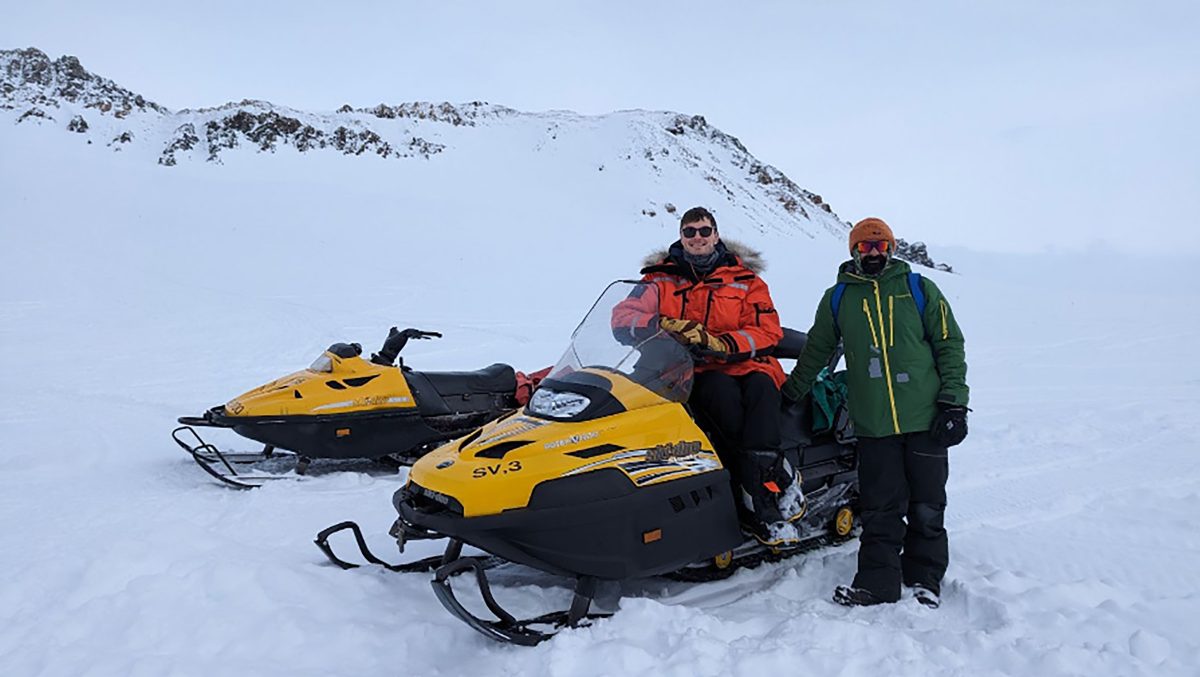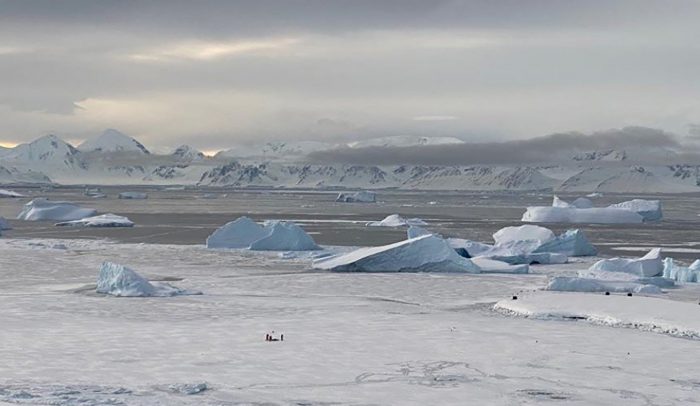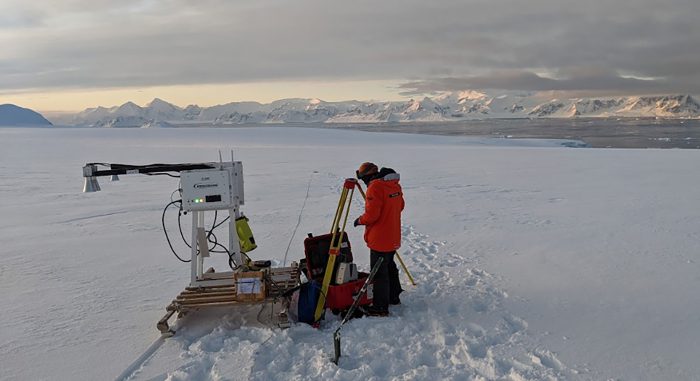
Robbie and Vishnu working on a glacier nearby the research station.
UM scientists see record shattering Antarctic sea ice conditions first-hand
The area covered by floating sea ice in Antarctica has been continuously monitored by satellites for more than four decades. So far in 2023, that area has been record-breakingly low, with the scientific community still uncertain about the causes and consequences of such a major event. Robbie Mallett and Vishnu Nandan from the Clayton H. Riddell Faculty of Environment, Earth, and Resources have been living and working in West Antarctica since March; their research has been directly impacted by this season’s unprecedentedly grim sea ice conditions.
“In July the sea ice was smaller than the long-term average by an area nearly four times the size of Manitoba.” – Robbie Mallett
Mallett and Nandan specialize in radar remote sensing of sea ice properties. Specifically, they aim to develop algorithms to interpret satellite data on the reflection of radar waves from the ice cover. The third team member of their winter-long field campaign is a radar instrument (“KuKa”) designed to mimic the instruments mounted on the European Space Agency’s satellite missions. KuKa was designed and funded through Professor Julienne Stroeve’s position as a Senior Canada 150 Research Chair, which also funds Mallett and Nandan’s work. Through their collaboration with the British Antarctic Survey’s DEFIANT project, the team is also equipped with instrumentation to measure the light that’s reflected and transmitted through the sea ice and its snow cover, and a high-resolution laser scanner that maps the snow surface as it transforms over the winter.

Robbie and Vishnu working a on thin sea ice cover near the station. Photo Vicki Warke, British Antarctic Survey
While Mallett and Nandan have been working on the ice, unfortunately, KuKa has had to stay home due to the record-breaking low sea ice conditions. “While Vishnu and I can work dynamically and respond to hazards from the thin ice as they emerge, unfortunately, KuKa can’t do the same,” says Mallett, “so considering that she’s worth over half a million dollars, we decided to wait until the ice thickens a bit more before letting her out”. Mallett and Nandan have however been able to install other instruments on the ice such as the light meters, and have collected sea ice cores for isotopic and chlorophyll analysis in their lab.
“It’s been a historically difficult season to work on the ice here,” says Nandan. “We’re super vulnerable to the wind here – when it blows from the land onto the sea, the ice can break away from the shore and drift away from the station. We need to be sure we and our instruments aren’t on it when that happens. Last week we saw the ice dramatically break away from the shore as the wind direction shifted unpredictably”. When the sea ice or wind conditions aren’t suitable, Mallett and Nandan have been working on a nearby glacier, trying to improve satellite measurements of Earth’s thinning ice sheets with their radar and laser scanners.

Vishnu setting up the laser scanner while “KuKa” the sled-mounted radar gathers data on the snow cover.
At the time of writing, Antarctic sea ice continues to track well below last year’s levels which were themselves record-breaking. Stroeve is the PI of the field campaign in Antarctica and has been watching the conditions closely this year. She told us “Sea ice performs so many critical functions in Antarctica: it reflects sunlight and cools the planet, it keeps marine ecosystems healthy and productive, and its annual formation helps drive the global ocean circulation pattern. So it’s been a shock to see the numbers sitting so far outside what we’ve seen over the last four decades. While the role of climate change in this record-breaking event has yet to be quantified, this year’s conditions are clearly cause for concern”.
“Stroeve and her team have pushed the frontiers of research by leading this alarming discovery of melting Antarctic sea ice, which is clearly cause for concern,” said Mario Pinto, Vice President (Research and International) at the University of Manitoba. “UM is at the forefront of climate change research, with a focus on better understanding the importance of the Antarctic and Arctic in determining climate policy and evaluating the impacts of climate change. This story showcases UM’s impact on the global stage by spearheading world-leading expertise in climate action and turning these discoveries into solutions for tomorrow.”






